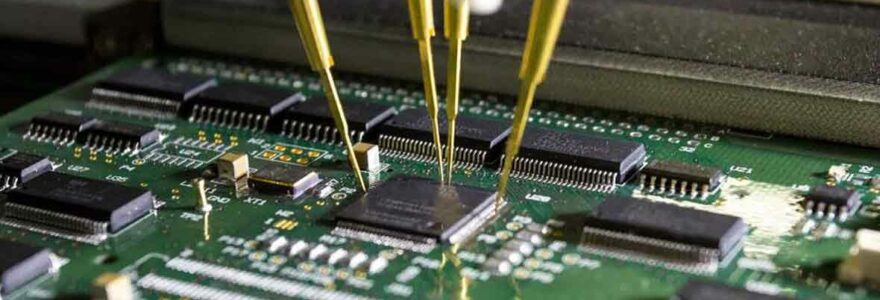In an era where technological evolution moves at a breathtaking pace, the demand for reliable and sophisticated electronics has never been higher. At the heart of this evolution lies the intricate world of Printed Circuit Boards (PCBs), which serve as the backbone for nearly all modern electronic devices. High Density Interconnect (HDI) PCBs, in particular, have emerged as a pivotal innovation, pushing the boundaries of what's possible in electronic design. These advanced boards allow for a denser component placement, finer lines, and improved electrical performance, enabling more complex and powerful devices to be built on smaller footprints. But with these advancements come challenges — ensuring reliability amidst such complexity is paramount. This article delves into the symbiotic relationship between reliability and HDI PCBs, exploring how the industry is crafting robust electronics poised to shape the future.
Advancements in HDI Technology for Robust Electronics
HDI technology has witnessed significant advancements in recent years, paving the way for the development of more robust and reliable electronic devices. These advancements have been driven by the increasing demand for portable devices that offer high performance in compact form factors. Let's explore some emerging trends in HDI technology and how they contribute to improved electronic durability.
Emerging Trends in HDI Technology
One of the key trends in HDI technology is the shrinking size of components. This allows for the integration of more functionalities within a smaller footprint, resulting in lighter and more portable devices. Another trend is the increased use of microvias, which are small holes drilled into the PCB to create connections between layers. Microvias enable the routing of signals through multiple layers, enhancing the overall performance and reliability of the electronic device. Additionally, the use of advanced materials, such as thin copper and flexible substrates, has become more prevalent in HDI PCB manufacturing, further improving the durability of electronics.
How HDI Advances Improve Electronic Durability
The advancements in HDI technology greatly contribute to the durability of electronic devices. By integrating more functionalities within a smaller space, HDI PCBs reduce the number of interconnections, minimizing the risk of signal loss or interference. This leads to improved signal integrity and enhanced overall performance of the device. Furthermore, the use of microvias allows for shorter signal paths, reducing the propagation delay and enhancing the speed of electronic transmissions. These improvements in signal quality and speed result in more reliable and robust electronics that can withstand various environmental conditions.
HDI in Modern-Day Electronic Innovations
As we stand on the brink of the next technological frontier, HDI PCBs are undeniably at the forefront of electronic innovations. With the booming Internet of Things (IoT), augmented reality, artificial intelligence, and a host of other transformative technologies, the need for efficient, compact, and high-performance electronics is more pressing than ever. HDI, with its capabilities of supporting higher component density and faster electrical performance, caters precisely to these demands.
Role of HDI PCBs in Enhancing Reliability of Electronic Devices
Reliability is a crucial aspect of any electronic device, and HDI PCBs have emerged as a key factor in ensuring the reliability of such devices. With their compact size and advanced circuitry, HDI PCBs improve the overall robustness and longevity of electronic devices.
Challenges in Manufacturing HDI PCBs and Effective Solutions
While HDI technology brings numerous benefits, it also poses unique challenges in the manufacturing process. However, these challenges can be overcome through innovative solutions and careful planning. Let's explore some common challenges faced in HDI PCB manufacturing and the effective solutions employed.
HDI PCBs in the Next Generation of Electronics
The future of HDI PCBs looks incredibly promising, with further improvements and advancements on the horizon. As technology continues to advance, the evolution of HDI PCBs is expected to follow suit, enabling the development of even more efficient and durable electronic devices.
Predicted Evolution of HDI PCBs
The evolution of HDI PCBs is likely to be driven by the demand for even smaller and more powerful electronic devices. Miniaturization will remain a key trend, with HDI technology enabling the integration of more functionalities within increasingly smaller footprints. Additionally, advancements in materials and manufacturing techniques will likely result in even more robust and reliable HDI PCBs.
Integration of HDI PCBs in Future Electronic Gadgets
In the future, HDI PCBs are expected to be integrated into a wider range of electronic gadgets, including wearable devices and Internet of Things (IoT) devices. The compact size and enhanced functionalities of HDI PCBs make them ideal for these applications, enabling seamless connectivity and reliable performance.
Impact of HDI PCBs on Future Electronic Design and Functionality
The continued adoption of HDI PCBs will have a significant impact on the design and functionality of future electronic devices. With the ability to incorporate more features in smaller packages, HDI PCBs will enable the development of innovative products that push the boundaries of technology. From foldable smartphones to smart clothing, HDI technology will play a crucial role in shaping the future of electronics.
In an era where technological evolution moves at a breathtaking pace, the demand for reliable and sophisticated electronics has never been higher. At the heart of this evolution lies the intricate world of Printed Circuit Boards (PCBs), which serve as the backbone for nearly all modern electronic devices. High Density Interconnect (HDI) PCBs, in particular, have emerged as a pivotal innovation, pushing the boundaries of what's possible in electronic design.
